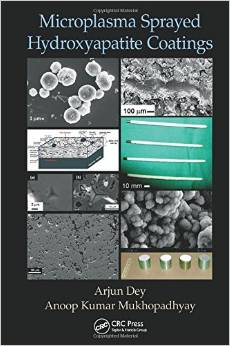
Microplasma Sprayed Hydroxyapatite Coatings
by Anoop Kumar Mukhopadhyay /
2015 / English / PDF
31.1 Mb Download
There has been enormous growth in the use of medical implants. However, in the case of hip replacement, loosening of metallic prosthesis fixed with polymethylmethylacrylate bone cement has resulted in painstaking revision surgery, which is a major problem for the patient, surgeon, and biomedical technology itself. In fact, global recognition of this problem led to the development of cementless fixation through the novel introduction of a bioactive hydroxyapatite (HAp) coating on biomedical-grade metallic implants. Since then, a wide variety of coating methods have evolved to make the HAp coatings on metallic implants more reliable. Microplasma Sprayed Hydroxyapatite Coatings discusses plasma spraying and other related HAp coating techniques, focusing on the pros and cons of macroplasma sprayed (MAPS)- and microplasma sprayed (MIPS)-HAp coatings. The book begins by explaining what a biomaterial really is, what the frequently used term biocompatibility stands for, and why it is so important for biomaterials to be biocompatible. It then: • Examines the structural, chemical, macromechanical, micro/nanomechanical, and tribological properties and residual stress of HAp coatings • Evaluates the efficacies under simulated body fluid immersion for MAPS- and MIPS-HAp coatings developed on biomedical implant-grade SS316L substrates • Offers a comprehensive survey of state-of-the-art in vivo studies of MIPS-HAp coatings, presenting the results of pioneering research related to bone defect fixation Shedding light on the future scope and possibilities of MIPS-HAp coatings, Microplasma Sprayed Hydroxyapatite Coatings provides a valuable reference for students, researchers, and practitioners of biomedical engineering and materials science.











